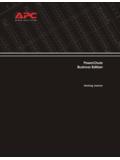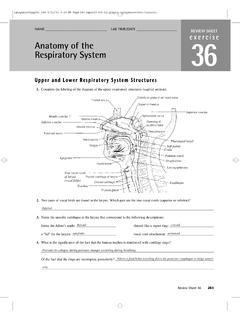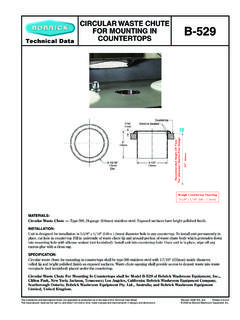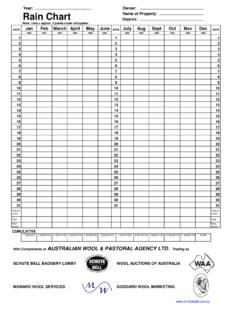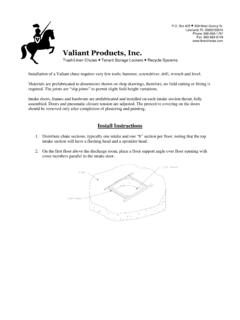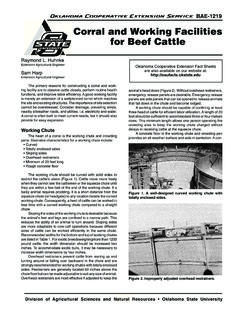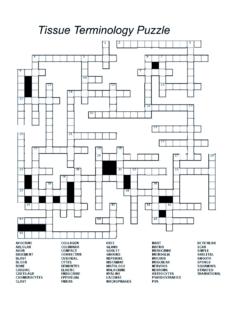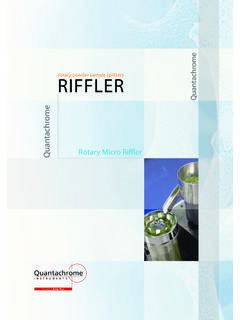Transcription of Rock chute spillways - agrireseau.net
1 FACTSHEET. Rock chute spillways Introduction There are numerous techniques for con- trolling the flow of water from a field to a stream and reducing bank erosion. A. rock chute spillway installed at the edge of a field at the confluence of a grassed waterway or ditch and a stream is a way of directing surface water and reducing soil loss. The purpose of this fact sheet is to describe situations where a rock chute spillway is needed, along with the tech- niques for building such structures. A B. Photos 1 A and B : Rock chute spillway Source : Bernard Arpin and Robert Beaulieu (MAPAQ). Definition A rock chute spillway is a structure that allows for the safe flow of surface water in an outlet.
2 This type of spillway helps stabil- ize banks by preventing retrogressive erosion of the bottom of waterways (furrows and ditches) and the formation of erosional gullies in fields. This flexible, low-cost and effective structure is readily adapted to the site and represents few drawbacks for agricultural practices. However, unlike a structure such as an inlet well with a sedimentation basin, it does not allow for water retention and the sedimentation of the soil particles contained in runoff water. The rock chute spillway is used to resolve ero- sion problems at the low end of fields, at the outlet of a furrow, an interception channel or a grassed waterway, or any other place where water flows into a stream.
3 Design of a rock chute spillway Grassed waterway Berm Buffer strip Step 1: Assess surface erosion problems, locate site m rea Furrow for structure and determine drainage area St The first step in designing a rock chute spillway is to clearly pinpoint the source of erosion. It is essential to evaluate overall field drainage and identify drainage areas along with the reasons for erosion. It is also important to ascer- tain whether an upstream problem needs to be corrected or whether installing a spillway alone will provide an adequate solution to the problem. The fact sheet entitled Diagnosis Figure 1 : Rock chute spillway and Solutions for Field Erosion and Surface Drainage Prob- Source : Georges Lamarre, adapted by Pierre Caron (MAPAQ) lems could be useful for assessing erosion problems.
4 Photo 3 : Site where water flows into the stream Source : Victor Savoie (MAPAQ). A B. Photos 2A and B : Erosion at the edge of a field Source : Georges Lamarre and Victor Savoie (MAPAQ). Slope of drainage basin Determine the slope of the drainage basin that drains Assessing the situation will involve interviewing the farm toward each structure (see Figure 1 in the fact sheet operator, applying the available assessment tools (aerial entitled Evaluation of Peak Flows for Small Agricultural photographs, drainage plans, etc.) and conducting a field Drainage Basins in Quebec ). visit. The field visit also represents an opportunity to take measurements and collect data required to design the Drainage basin surface area structure.
5 This evaluation involves a number of elements: Visual site inspection;. The following information will need to be collected and Assessment of available aerial photos, farm plans recorded during the field visit (ideally before vegetation and subsurface drainage plans;. growth in the spring), as well as in the discussions with the Use of laser level with podometer;. farm operator: Use of precise topographical data ( , Lidar1), if available. Field history Is the problem recent? Is it connected with a change in agri- cultural practices, grading or other work, Step 2: Determine peak flow for each spillway Behaviour of water in the spring Note whether any part of the field is flooded and how the The fact sheet entitled Evaluation of Peak Flows for Small water flows in the spring.
6 Agricultural Drainage Basins in Quebec contains all the in- formation needed to assess peak flows for individual spill- Soil texture ways. The design of the structure will differ depending on soil type. With sandy soil, the risk of erosion is far greater, and The most recent data from Environment Canada IDF curves2. the structure has to be built accordingly. are to be used in these calculations. Condition of buffer strip, presence of vegetation and a berm Step 3: This information indicates how the bank is protected and Determine crest width of spillway: will help identify other potential areas where water flows spillway entrance point into the stream.
7 If so, a berm may need to be built to chan- nel water laterally toward the spillway. Q. Use equation: Wc = (see Figure 2). C X h3/2. Field morphology Wc : Crest width (metres). A drawing depicting the morphology of the field is essen- Q : Drainage basin peak flow (m3 / sec). tial for determining whether an artificial funnelling struc- C : Constant = (in metric system). ture needs to be created. The dimensions of gullies (depth, h : Water depth (metres), bottom width and slope) must be measured to size the spill- maximum of m ( m is generally a good choice). way structure. (Commonly used formula for calculating water flow for trapezoidal as well as _____.)
8 Parabolic spillways .) See Figure 2. 1. : LIDAR Light Detection and Ranging: System for accurately measuring land elevations using a laser mounted on an airplane. 2. : Environment Canada IDF Files: Last consulted on August 6, 2009. 2 Rock chute spillways Table 1: Crest width (m) in terms of peak flow (m3/sec). and water depth (m). Drainage basin Crest width (m) Crest width (m). peak flow for water depth for water depth (m3/sec) of m of m or lower 2* 2*. 2*. 1 Photo 4 : Inlet apron for rock chute spillway * Crest width not less than 2 m Source : Mikael Guillou (MAPAQ). Step 5: Determine length of outlet apron Wc The outlet apron is in the transition zone between the h supercritical flow generated by the spillway and the sub- critical flow at the base of the spillway.
9 In this area, a hy- draulic jump combined with strong turbulence occurs. The riprap at the foot of the spillway is therefore critical: it Figure 2 : Evaluation of crest width should be at least twice the D50 for the stone. The outlet Source : Roger Cloutier, adapted by M Pierre Caron (MAPAQ). apron should be at least 1 to m long. However, there are various possible scenarios: Step 4 : Determine length of inlet apron The inlet apron is the upstream part of the structure. It is even with the land and eases the transition between the subcritical flow from the outfall to be protected and the critical flow produced at the junction of the outfall and the steep slope of the spillway.
10 The inlet apron must be at least m long. Critical flow Subcritical flow Torrential flow Hydraulic jump Subcritical flow Photo 5 : Turbulence at outlet apron of rock chute spillway Trench Inlet apron Source : Ghislain Poisson (MAPAQ). Outlet apron Figure 3 : Spillway inlet and outlet aprons Source : Drawing adapted by Pierre Caron (MAPAQ). Rock chute spillways 3. Case 1 : Case 3 : The spillway discharges water into a wide stream that The spillway drains into a small stream. In this case, 30 to never dries out even during low-flow periods (at least 30 cm 60 cm of rip-rap is placed over the entire streambed at the of water during low-flow periods).










